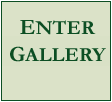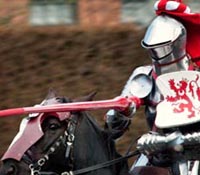The idea
for this painting has been in the back of my mind for quite
sometime - probably since I was researching my depiction of
the battle of Tewkesbury back in 1996. When I come across a
potential subject, I file away the idea until I have sufficient
information and time to transform it into a complete picture.
I was drawn
to this subject by several factors - the story of Edward IV's
exile and return to England, culminating with his victories
at Barnet and Tewkesbury, captures perfectly the great swings
of fortune that characterise the "Wars of the Roses".
His entry
into London on 11th April 1471 was not a triumphant procession,
but part of a huge gamble to reclaim the throne which could
have led to failure and defeat at any moment. On the morning
of the 11th, soldiers wearing the badge of the Earl of Warwick
were still to be found in the streets of London; the Recorder
of the City, Thomas Urswick, telling them to "go home to
dynere" only a couple of hours before Edward arrived at
the gates.
Along with
the chance to paint Bishopsgate itself, it is this sense of
insecurity that I want to capture. The mounted figures in the
foreground are entering the unknown, shadowed by the tall buildings
on either side. Although he is in the middle distance, Edward
IV is central to the composition - framed by the arch of the
gate and strongly lit, he should remain the focal point of the
picture. The foreground will contain a lot of detail, but it
is important that it doesn't distract from the central scene.
Along with other little touches that I hope will bring the picture
to life, these details should only become apparent when you
take time to look into the painting. But that is all in the
future and will evolve as the painting progresses.
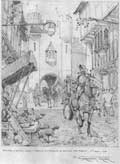
Click
image to enlarge |
I arrived
at this final composition after producing many thumbnail sketches,
trying different alternatives before moving onto the more detailed
sketch shown. This process, together with the underlying research,
can be very time consuming and I have spent many hours searching
out the references that I will need. (This is an ongoing process
as I am constantly collecting reference material - buying books,
sketching at museums, photographing re-enacters etc., in the
expectation that the information might be of use at some time
in the future.) Throughout this stage I have to constantly remind
myself of what I want to achieve with the finished painting
and whether I have fulfilled the criteria I set myself. Sorting
out the viewpoint and perspective has proved something of a
challenge, but after a few days of scribbling I am reasonable
happy with this version
of the sketch (the rest are in the bin!).
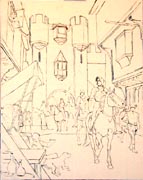
Click
image to enlarge |
The next
stage is to transfer this rough drawing onto the blank canvas.
I have decided on a canvas measuring 24" x 30", a
good size that allows plenty of scope for detail. With some
paintings
I get started with paint straight away, but as I have spent
so long working this one out, I will draw it onto the canvas
first. By squaring up the sketch and canvas into an equal number
of squares, I am able to position the major elements of the
composition in exactly the right place. Then, using very thin
acrylic paint I 'draw' in the key lines so that I can see them
through the initial stages of painting. These lines will soon
be completely covered over (and it is important that they can
be easily covered, as I'm sure some of the elements in the picture
will
need to be adjusted as we proceed) but they provide a very useful
guide to start with. As acrylic paint dries almost mmediately,
I then wipe the canvas over with turps to clean off
the pencil marks and any grease.
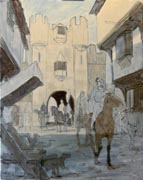
Click
image to enlarge |
There is
nothing more distracting than white canvas, so as soon as the
turps has dried I cover the whole painting with colour, using
a broad brush to lay down some basic tonal values. This stage
is pretty quick and satisfying - but can be misleading. In the
course of an hour or so a blank canvas with a few lines on it
has become a 'picture' (albeit a rather messy one!). It is tempting
to think that it won't take long to finish. Experience tells
me otherwise!
Now comes
the most frustrating aspect of oil paint - the slow drying time.
In the later stages of painting, when I am working on fairly
small areas, I can keep painting continuously, but now the whole
canvas is covered in sticky wet paint, I have no alternative
but to leave it until it is dry. I will have to be patient and
get on with some book illustration work for Osprey!
Next week
the paint will hopefully have dried sufficiently to allow further
progress and the addition of some detail.
Return
to Introduction
Forward
to Week 2

